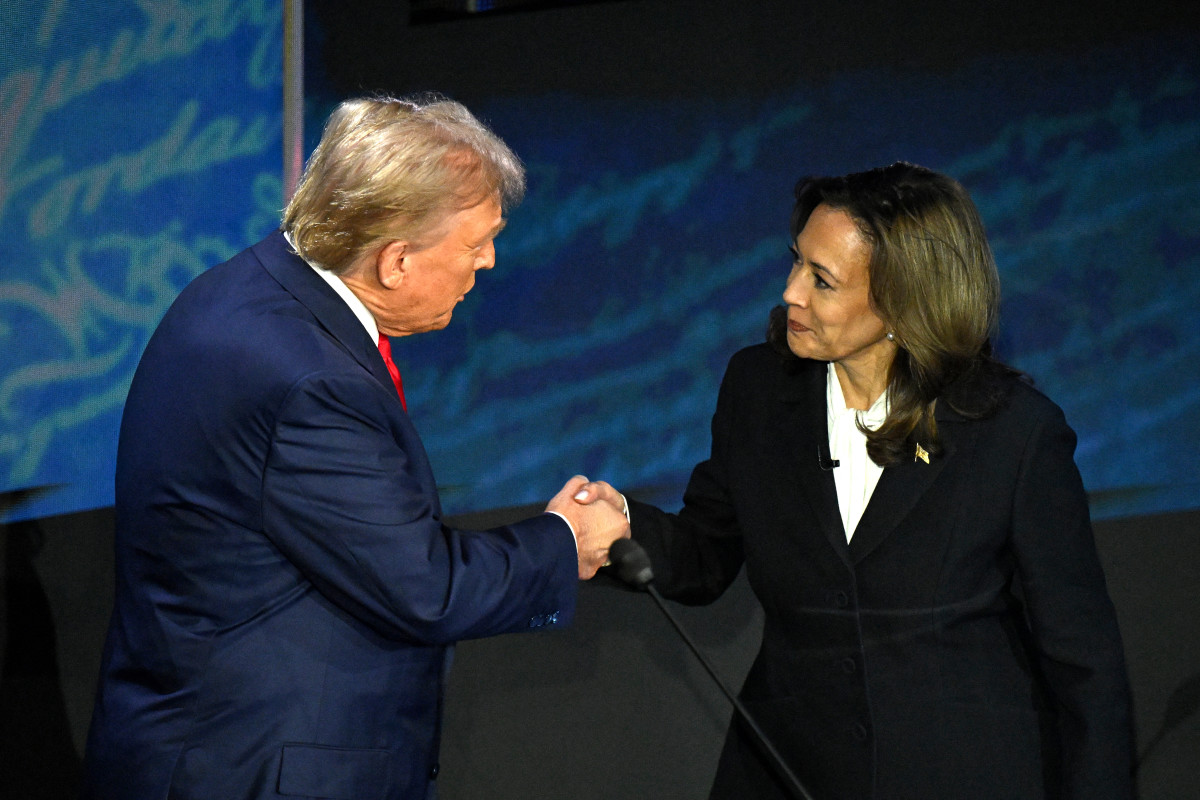
Stocks retreated from their record-setting run last week as investors shifted focus to some troubling signals in the bond market. These signals could be tied to the deadlocked presidential election and the impact either candidate will have on the world's biggest economy.
The final New York Times/Siena College poll before the November 5 vote, published early Friday, showed Vice President Kamala Harris and former President Donald Trump deadlocked at 48 points each following a bruising three-month campaign and hundreds of billions in partisan political spending.
Trump, however, has consistently led in online betting markets, where investors can place wagers on a binary election outcome.
💰💸 Don’t miss the move: SIGN UP for TheStreet’s FREE Daily newsletter 💰💸
Data from battleground states continues to suggest that neither candidate holds enough sway to capture the 270 Electoral College votes needed to secure the White House.
And that betting market lead has translated into one of the more paradoxical trades in global financial markets over the past few weeks: a surge in Treasury bond yields tied to the inflation risks of a Trump presidency, even as the Republican nominee is seen as holding a firm lead in polls on economic leadership.

"Betting market odds for a former President Trump victory in November are tracking very closely to 10-year Treasury yields," said Adam Turnquist, chief technical strategist at LPL Financial. "In contrast, the odds for Vice President Harris to win are moving in the opposite direction of rates."
A trillion here, a trillion there ...
"Growing concerns over rising U.S. deficits and who will win the White House next month may also be behind the advance," he added.
The non-profit, non-partisan Committee for a Responsible Federal Budget has said Trump's economic plans will, at the mid-point, increase U.S. debt by around $7.5 trillion, more than double their assessment of those from Vice President Harris.
"Our large and growing national debt threatens to slow economic growth, boost interest rates and payments, weaken national security, constrain policy choices, and increase the risk of an eventual fiscal crisis," the CRFB said earlier this month. "However, neither major candidate running in the 2024 presidential election has put forward a plan to address this rising debt burden."
Related: Legendary hedge fund manager sounds alarm on US debt (Here's why he's wrong)
The debt burden itself, which is now approaching $36 trillion, is only one aspect of the recent bond market surge. The surge has also lifted the Merrill Lynch Option Volatility Estimate, often called the 'VIX of bonds' and a key market gauge, to the highest levels of the year.
$MOVE Treasury vol pricing in almost 20bps of post-election interest rates moves.. yuge.
— Mike Zaccardi, CFA, CMT 🍖 (@MikeZaccardi) October 25, 2024
but down at tick to 127.5 on the index. pic.twitter.com/J1STlEV01E
Inflation is already showing further signs of stickiness following its modest summer easing, partly tied to an outperforming economy. It was last pegged by the Atlanta Fed as growing at a 3.3% clip, a surprisingly robust job market, and the recent jump in global oil prices.
Tariffs in focus
Trump plans to use trade tariffs, which are paid by U.S. importers and passed on to consumers, to fund some of his tax pledges. His threat to deport millions of migrant workers and significantly tighten immigration are also seen as adding to overall U.S. inflation pressures.
The International Monetary Fund, which boosted its forecast for U.S. growth earlier this week, also warned of inflation risks tied to protectionist policies and their impact on the world economy.
"If you have some very serious decoupling and broad scale use of tariffs, you could end up with a loss to world GDP of close to 7%," IMF first deputy managing director Gita Gopinath told the BBC.
"These are very large numbers, 7% is basically losing the French and German economies," she added. "That's the size of the loss that would be."
Related: S&P 500 blows past bond market warnings
Of course, Treasury markets are influenced by a host of factors, with Federal Reserve rate forecasts and domestic growth prospects likely the most significant. However, the increasing concern over the inflationary impact of a second Trump presidency also has implications for the stock market.
Turnquist notes that a sustained rise in benchmark 10-year Treasury yields is often tied to pullbacks for the S&P 500, adding that while the recent selloff has taken the paper to around 4.28% this week, it hasn't yet breached 'resistance' levels that could lead to even higher moves.
Althea Spinozzi, head of fixed income strategy at Saxo Bank, says the 'Trump trade' in Treasury markets is "undeniable", adding that the current Treasury selloff "will intensify if a Red Sweep is coupled with a Fed rate cut on November 7, which could trigger fears of economic reacceleration, causing investors to dump bonds."
The Trump trade in markets is real
"Trump-style policies, such as tax cuts and infrastructure spending, are inflationary," she added. "Economic growth fueled by tax cuts and deregulation can increase inflation pressure, limiting the Federal Reserve's ability to cut rates aggressively."
"If the Fed is too accommodative, markets may react by selling bonds, pushing yields higher and bond prices lower," Spinozzi concluded.
Depending on the outcome of House elections, as well as the 34 Senate seats in play next month, Spinozzi sees benchmark 10-year note yields hitting 5% in the event of a "Red Sweep" that includes Trump's win and Republican control of both Houses of Congress.
More Economic Analysis:
- Goldman Sachs analyst overhauls S&P 500 targets for 2024, 2025
- PCE Inflation report resets bets on another big Fed rate cut
- Why stocks are soaring and the rally has room to run
In the event of a similar sweep for the Democrats, Spinozzi says 10-year yields could fall to as lower as 3.6%, "but climb above 4% long-term amid fiscal woes."
What could this mean for stocks, particularly now that the S&P 500 is peeling away from the record highs it printed last week?
Stocks hit their last all-time high of 5,864.67 on October 18, when 10-year yields retreated to 4.07%. Since then, the benchmark has fallen nearly 1%, to last Friday's 5,808.12, as 10-year yields have climbed back to the 4.25% level.
Any move higher could be concerning.
"The start of the S&P 500 correction last fall and its pullback this spring both overlapped with a breakout in yields above this resistance range," Turnquist said.
Related: Veteran fund manager sees world of pain coming for stocks







